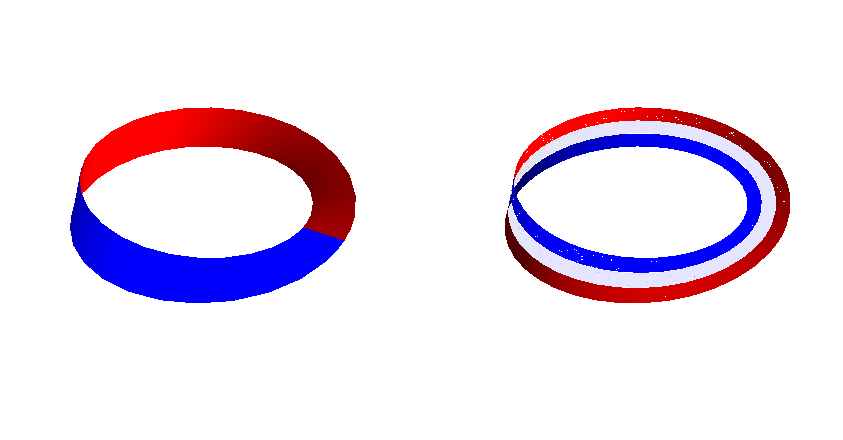This can be presented in ordinary terminology to high school students and even lower. I made it to first and second year college students. While I think a student can appreciate the connection to maxima, minima, and saddle points better if they have had multivariable calculus, I don't think it is necessary. Only some in my audience had had it. Pretty much everyone had seen a donut before.
When you dunk a donut in coffee (or cider), the wet surface morphs. The surface transitions between homeomorphically distinct objects when the donut passes a critical value of a certain distance function: the depth the donut has been dunked.
There are three types of transitions that can be characterized by adding one of three elements, whose boundary is connected to the current boundary:
- a point (0D)
- a line segment (1D)
- a disk (2D)
Once added, the element can spread out and form a (bigger) surface.
For instance, as the donut approaches the coffee, no part is wet and the wet "surface" is the "empty set." As the donut makes contact with the coffee, a point gets wet which spreads out in a bigger wet surface as the donut is dunked deeper. The boundary remains a loop until the next transition.
The next two transitions are a bit tricky to describe. They occur when the donut hole first reaches the surface of the coffee and when it first becomes completely submerged. In between the transitions the boundary consists of two loops.
What one sees at the second critical value (depth = lower inside of the donut hole) is the (single) boundary loop pinching together at a point and immediately separating into two loops.
This is not what happens if you connect a point to the single loop boundary. Connecting a point changes nothing. However, it is what happens when you add a line segment, which immediately spreads out. Topologically, this is the correct construction. Unfortunately, most people, even high-schoolers, do not have the appetite to experiment enough times to convince themselves that the construction is good description of what they see happening.
At the third critical value (depth = upper inside of the donut hole),
a line connects the two boundary loops and spreads out so that the boundary is again a single loop.
At the fourth critical value (depth = complete submersion), a disk is added. Again this may be hard to see. The boundary appears to "shrink to a point" as the donut goes under. However, at no depth is the boundary at the top a point. Until the top is level with the surface of the coffee, the boundary is a loop. When level, the whole surface of the donut is included. The only way to close the hole is to connect the boundary of a disk to the boundary of the wet surface.
A theoretical connection is that the dimension of the element that is added is equal to the index of the critical value. At each critical point, one of three things happen:
- a cup: the principal curvatures are up (all sections by a vertical plane are concave up)
- a saddle: one of the principal curvatures is up, the other down (some sections by a vertical plane are concave up, some concave down)
- a cap: the principal curvatures are down (all sections by a vertical plane are concave down)
The index is equal to the number of principal curvatures that are down.
The transitions have indices $0,1,1,2$ in order (hence point, line, line, disk).
That in turn implies an Euler characteristic of $\chi=(-1)^0+(-1)^1+(-1)^1+(-1)^2 = 0$, should you want to make a connection there.
Finally, it's an argument to get your department to spring for donuts for your class.
I believe I got the idea from Milnor's Morse Theory, but I'm on vacation and cannot check.
Marston Morse himself gives a demo (of a different surface, not a donut) which I was shown in college: https://www.youtube.com/watch?v=QVMnv-KpQlM

